 Your new post is loading...
 Your new post is loading...
Whitelists have become of interest for brands looking to make sure their ads only appear in pre-approved places. Instead of blacklists, which can end up being a game of whack-a-mole, whitelists, while less scaleable and more expensive, can actually provide a better guarantee of not having an ad next to porn content — or worse. Now, a growing number of companies are testing influencer whitelists: Creating pre-approved lists of influencers that brands can work with, and in some cases, get unfettered, open access to their handles. Against the backdrop of brand safety, the issue becomes more prevalent. One marketing executive, who spoke to Digiday under condition of anonymity, said that he’s been “burned” by influencers who have taken his product, then posted content in “unsavory” ways that he said were “disgusting.” There have been flubs in the space. Perhaps the biggest one was when YouTube star PewDiePie posted videos with anti-Semitic jokes, costing him the business of brands including Disney and YouTube. Shortly after, in February, influencer and CoverGirl ambassador James Charles tweeted a joke about going to Africa and catching Ebola alongside a CoverGirl-sponsored tweet. And for influencers, it’s not just about so-called “brand safety” issues. Companies are also looking for influencers who haven’t worked with similar brands, or sometimes, haven’t worked with brands at all....
Brand management is a little bit like dental hygiene: Those who ignore it are going to end up with big problems that easily could’ve been avoided. Yet marketers who fail to comply with brand standards and legal safeguards risk losing more than just a tooth. These failures often cost content marketers their credibility and, in some cases, their jobs. Just ask the people who sexualized IHOP’s pancakes, told Bloomingdale’s shoppers to roofie their friends for the holiday season, and put the male symbol on the cover of The Washington Post’s magazine for a story about the 2017 Women’s March. Perhaps the most painful part of these marketing blunders is that it wouldn’t have taken much effort to prevent them....
One of the biggest challenges of a new branding project is ensuring your design is consistent across all platforms, touch points and territories. The worst mistake you can make is to create a brand that is impossible and impractical for the client to implement and use.
So how do you do create the perfect branding in an increasingly complex world? Here are five tips from leading designers…...
So you’ve got a business and you’re ready to push your branding efforts online. The first question you encounter is “How do I go about with branding?”
What I’ve noticed from my years of experience in online marketing is that you probably think branding involves the following: ● Logos, color schemes, and website design – What should my logo be? What colors represent my business best? How do I go about with my web design? ● Brand mentions, links, and social popularity – I have to be as visible online as possible, because this promotes brand recall ● SERPs visibility, ad campaigns, and other promotional efforts.
If you answered any of the above, then you’re looking at branding the wrong way. The items I mentioned are all marketing tools and strategies, and they only scratch the surface of branding....
Facebook’s news feed algorithm change does not favor brands. People want to see more relevant news and what their friends have to say about it, according to Facebook’s News Feed FYIFYI.
...Brand advocates are people who highly recommend brands and products without being paid to do so. Brand advocates are a company’s most engaged, loyal and valuable customers—a volunteer sales and marketing force.
Advocates’ recommendations are the number one influencer of purchase decisions and brand perceptions in nearly every product category from smartphones to software, hotels to housewares, cars to computers, and financial services to memberships.
In a recent Zuberance survey, 89% of Advocates said their friends buy or consider purchasing the products and services they recommend. Many consumers and business buyers ignore, skip, and TiVo out ads, but when advocates recommend something, consumers will go out of their way to buy it...
Brand engagement, much like a distinguished jurist once said about pornography, is easy to recognize but hard to define. Marketers have been talking about it for a long time, but nobody can really say what it is.
I think that’s because when people speak about definitions in marketing circles, what they really mean is metrics. Engagement comes in many forms and simply doesn’t doesn’t lend itself to simple quantitative measures. What it does represent is a value exchange.
Consumers engage with a brand they see as providing superior value. That has been, historically, derived mainly through product performance. More recently, however, marketers have been able to provide superior value in creative ways that go beyond product specifications. And that, is where it gets really interesting....
It’s not an earth-shattering insight that consumers are getting smarter and more skeptical of being sold to. But Wolff Olins and Flamingo’s report does offer some reasonable strategies for adjusting to today’s realities. If you’re still spending all your energy on thinking of ways to pitch and package, you’re in trouble. If you’re thinking of your brand as a static thing, set in stone, you’re behind the times.
The challenge for companies today is coming up with a fair exchange for consumers–one that could involve simple, honest utility, like Ikea, or a more altruistic mission, like Tom’s Shoes, or a broader engagement with the marketplace, like Faber and its academy. No matter what it looks like, if consumers think you’re being honest about the offer, they’ll come to you....
It is no longer all fun and games. A few years back it used to be a lot easier to build and manage a social following or maintain a brand’s online presence. A good old portfolio website and a Facebook brand page with a few hundred fans was all you needed. Now, you need a strategy, a plan, a manager and of course an ‘oh, crap what just happened’ plan. While on the surface it might seem easier than ever to manage a brand, I want you to consider the contrarian take that it is in fact more difficult to manage a brand in the age of new media. Why? Ponder and please comment on these 4 points...
|
Consumers seem to have fairly clear ideas about brand personalities on social media, and the use of slang isn’t… woke. In a new study from Sprout Social, roughly 1,000 US social media users weighed in on brand personalities, with most feeling that it’s “cool” if brands talk about timely events, but not politics. (In related news, consumers aren’t that interested in brands taking public stances in on social issues.) Meanwhile, respondents are most accepting of the use of video clips (83% seeing this as “cool” rather than “annoying”), though the exploding use of GIFs – which brands starting incorporating in their emails back in 2013 – isn’t met with quite as much fervor (58% approving as “cool”). It stands to reason that most would be happy with brands responding to questions, although separate data from the report suggests that only about one-third of consumer messages on social media in Q1 that needed a response actually got one… Behaviors that more social media users see as “annoying” than “cool” include: Making fun of competitors (67% annoying) and customers (88%); Using slang (69%); and Talking politics (71%).
Consciously or not, many brands are now running a freemium model. They are giving away a lot more than they used to, particularly across social media, just to keep up with the changing competitive landscape. And they are hoping to recoup on that significant content investment when consumers do buy. So has any of this changed the fundamentals of brand economics, or has it merely altered the manner in which brands achieve visibility?
By way of a sanity check, I went back to this paper from some years back to assess what still holds true.
Brands continue to simplify recognition and selection, and to instill trust in a world bulging with options. They continue to offer a simple way for time-poor consumers to filter the choice set. Consumers still buy because they identify with what some brands stand for – although one could argue that the criteria themselves may be shifting, particularly with younger buyers, as ethics becomes an important judging point....
Forrester Research predicted that 2015 will be the year that online brand communities make a comeback, and there are many reasons to celebrate the occasion.
Brands have increasingly found that investments in social media communities aren’t paying off. After spending significant time and resources building out Facebook pages, the platform has continually tweaked its Newsfeed algorithm to the detriment of brands, dropping the organic reach of their content to a mere two percent of their fans.
Rather than submit to these closed ecosystems, and the whims of ever-changing platform features, brands can regain control of their online communities by hosting them on-site. Below we’ve highlighted some of the ways these communities can drive real ROI for brands....
Brand archetypes are great to use in content strategy and better than personas. Why? A product doesn’t choose it’s customers. It’s the other way around.
Picture this: a room full of marketing managers are discussing the launch of a new product. The have studied their demographics, they have the results of test panels and market research in their hands. They have formulated personas and thought up a bunch of preconceptions about who is going to buy this. And still they have no idea if their strategy will work. Why? Because a product doesn’t choose it’s customers. It’s the other way around....
... One particularly large group of contributors to the mass of content uploaded to Facebook every day are brands looking to gain new customers and make a few sales. Unfortunately, it’s this group of contributors who are arguably contributing most to Facebook fatigue. Brands are all over Facebook, even if you don’t actually like any brand pages. Advertising and suggested posts mean that you’re bound to come across a brand post at some point, while ‘like and share’ competitions mean that you’re even more likely to have your news feed polluted by branded content.
That’s not necessarily a bad thing; a lot of brands do have genuinely interesting things to say and provide some entertaining stuff that deserves to be shared. However, a lot of brands have fallen into Facebook auto-pilot, relying on a banal template of posts and images formulated by set ideas of what a brand should ‘do’ on Facebook and a desperation not to offend.
You’ve undoubtedly seen the type of content I’m talking about; ‘LIKE this post if you like dogs, SHARE it if you love dogs’ from a company selling washing machines; ‘It’s Monday, tell us who you’re favourite member of ABBA is’ from a gambling company. Its content designed to get likes and shares, regardless of relevancy to the brand posting it...
...showcase–those who are doing the hard work to integrate social media into some of America’s bigger companies. And then I got to thinking–there really is no list of these people anywhere.
Oh sure, there are Twitter lists here and there. Jeremiah Owyang has his list of social media new hires (and the last time he posted it was April 7). But, I really haven’t seen a good list of corporate social media leaders anywhere.
Probably with good reason. These folks are in high demand. Any such list would be pretty valuable to recruiters and agencies/companies (insert Arik evil laugh here). So, I thought, why not create one? Or, at least START to create one.
When analyzing branding communities we hear a lot of analysis focusing on the brand. This post examines the consumer’s motivations to follow brands on different social media platforms and their expectations when they join these branding communities.
How Consumers Use Branding Communities on Social Media Platforms
Consumers use branding communities to engage with brands. Consumers use branding communities first to share their opinions about a certain brand. Since most brands now actively respond to individual comments, there is mutual engagement between the brand and the consumer. Second, consumers “like” social media platforms such as the Facebook pages of these brands because wait for it, they actually buy and use their products. This is one of the most important factors because this is part of what motivates a consumer to join a branding community....
|



 Your new post is loading...
Your new post is loading...









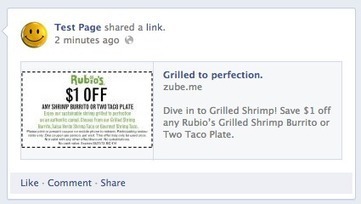



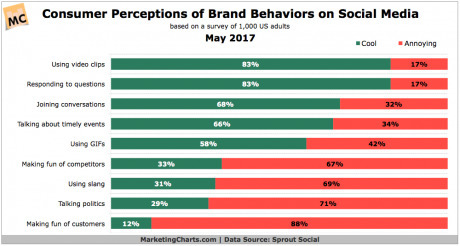

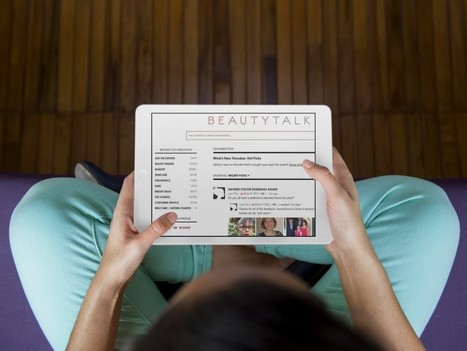
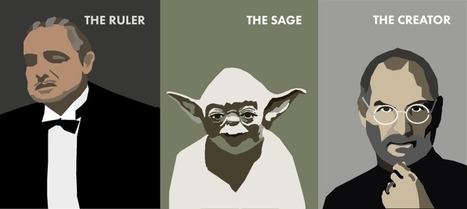


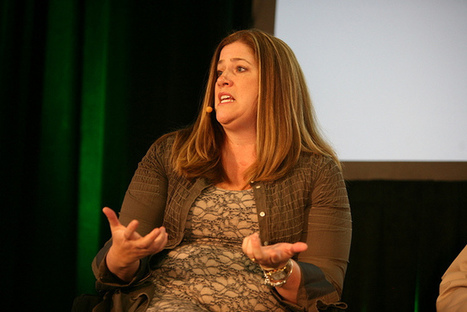







Brands are asking for pre-approved lists of influencers that they can work with, and in some cases, get unfettered, open access to their handles.